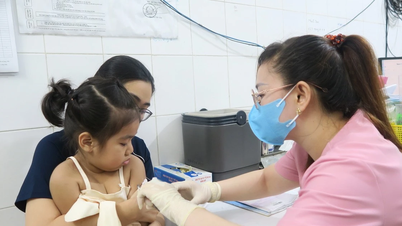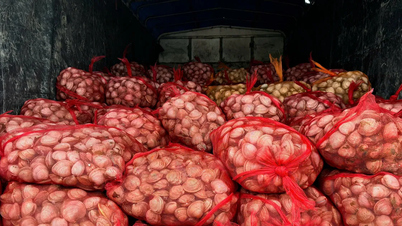The Hanoi Center for Disease Control (CDC) has just announced that during the week (March 10-17), the city recorded 70 cases of chickenpox, a slight decrease compared to the previous week when Hanoi recorded 112 cases of chickenpox.
Thus, from the beginning of 2023 to now, Hanoi has recorded 548 cases of chickenpox, while there were 4 cases in the same period in 2022. Of which, the number of cases recorded is high in preschool age (36.5%) and primary school age (38%).

Chickenpox is a seasonal disease, there is a vaccine to prevent it (photo source internet).
Chickenpox patients were recorded in 18/30 districts, of which some districts had high numbers of cases, led by Chuong My with 230 cases, followed by Me Linh (69 cases), Ba Vi (60 cases), Nam Tu Liem (56 cases), My Duc (42 cases).
According to the Hanoi CDC, compared to the same period in 2022, the number of chickenpox cases recorded in 2023 increased, with most of the patients recorded in preschool and primary school age groups.
According to statistics nationwide, in January and February 2023, the country recorded nearly 3,200 cases of chickenpox, a slight increase compared to the same period in 2022.
According to the Department of Preventive Medicine , chickenpox is an acute disease caused by the Varicella Zoster virus (which causes chickenpox in children and shingles in adults).
The virus can survive for several days in the chickenpox scabs that flake off and remain airborne. The disease is highly contagious, transmitted from person to person through the respiratory tract through direct contact, through nasal and throat secretions, and fluid from chickenpox blisters.
When sick, there are often symptoms of fatigue, headache, mild fever, runny nose, sore throat and red rash on the skin starting in the head and eyes and then spreading to the whole body. The period of transmission of the disease is 1-2 days before the rash appears and within 5 days after the first blisters appear. The disease usually lasts from 7-10 days.
Chickenpox is a benign disease, with no serious symptoms other than blisters, but it can easily cause skin infections where the blisters appear, which can lead to sepsis and encephalitis, although rare. Pregnant women with chickenpox are very dangerous for the fetus, which can cause miscarriage or birth defects. The disease occurs at all ages, often occurring in winter and spring.
According to experts from the National Children's Hospital, chickenpox in infants is a serious disease (more serious than chickenpox in children or adults) with a high risk of death of up to 30% due to multi-organ damage.
If the disease is not treated promptly and properly, children may experience dangerous complications such as respiratory failure, septic shock, bacterial superinfection, neurological complications such as: meningitis, myelitis, optic neuritis, polyneuritis. Or some other complications such as adrenal insufficiency, glomerulonephritis, eye damage, even death.
To proactively prevent chickenpox, the Department of Preventive Medicine, Ministry of Health recommends that people take the following measures:
Limit contact with sick people to prevent spread.
People with chickenpox need to stay home from school or work for 7-10 days from the time they first notice symptoms to avoid spreading the disease to others.
Wash hands regularly with soap, use separate personal items, and clean nose and throat daily with saline solution.
Regularly clean houses, schools, and household items with common disinfectants.
Vaccinate children from 12 months of age against chickenpox.
Source






























































































Comment (0)